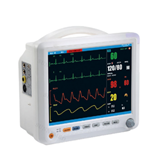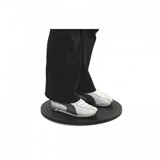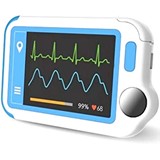This growth in telemedicine sees doctors doing consults with patients by email or webcam, patients are using devices to relay blood pressure, heart rate, blood sugar, weight and other vital statistics, hospitals are providing remote support to intensive care units and emergency rooms - these are just a few of the ways telemedicine is being used.
Smartphones, apps, wearable devices, and online technologies now allow people to book a vacation, make payments, look up directions, and any number of things. As a physician, health professional, clinic or health facility, thinking about how you can leverage digital technologies to improve the patient experience is a smart way to stay one step ahead of your competitors.
The Patient Experience
Patients no longer rely on their physician as the all seeing, all knowing, instead they are actively engaged in their own health journey.
Patients, who are consumers, are shopping for the best services, prices, and practitioners.
This crosses all age groups, because even though millennials - the age group 25-35 - do use technology more, the over 55s and even the much older generations now actively use platforms like Facebook.
The Basics of Leveraging Digital Technology
Step into the shoes of a patient for just one moment.
You pick up your smartphone to look for a practitioner or solution, the first thing you’ll be confronted with are a range of websites. Therefore, the first post of call is to have a highly professional, modern website design.
Embedded within your website is a range of patient interaction and communication tools - phone, text, email or chat to enable various methods of easy communication.
Since people are searching for information, creating web content on a regular basis is recommended. This is easy to do via way of a blog and research has shown that businesses that blog get twice the amount of traffic and leads. The lifetime of each blog post often has a compounding effect, attracting customers over the long term.
Essentially, your blog is your own media channel that enables you to distribute as much quality information as you like - expanding your online real estate and drawing people into your web. It’s also called inbound marketing.
Actively engage in social media to show people you are there. The worst thing you can do is have social buttons on your website, but when a person clicks on them and goes to Facebook, your page hasn’t been updated since 2014!
Patients as consumers will look. So even though it may seem like there’s little return on investment, you simply have to do it.
Redistribute your blog content across your social media platforms, share tips and helpful, useful information, be available to answer questions, guide people to your website and great services. Use both your website and social media as an educational tool. Educate patients about health issues, and also about your services. Make it a two-way conversation.
Unlike back in the day when people only used phone or walked directly into your clinic or practice, today, your online presence acts as your storefront. The more active and impressive it looks, the easier the decision is for patients to choose your services.
Creating a Digital Health Advisor
To leverage digital technology to a whole new level, a report by The Commonwealth Fund suggests that building a Digital Health Advisor (DHA) could be the way for the future.
They suggest your DHA might be in the form of an app that can be used on your website and smartphones. Say for example the patient has a skin rash, they enter their issue, answer a series of questions and a whole range of pictures and information from your database appears to help the patient identify the issue.
Sure, people can search sites like WebMD to look up symptoms and pictures, but with a DHA it adds another level of personalisation. The patient’s records are recorded and their history builds digitally, various information from their entries is compiled in your database to reach a more definitive self-diagnosis, to which they could then follow on by uploading pictures and comments for digital review and recommendations. None of the current tools draw on this type of history, needs and preferences in a digital environment.
One of the current obstacles is that at present there are ample healthcare information technologies, but they are all operating as silos and can’t be translated into useful information that can help progress the health care system or aide the patient in a more personalised, meaningful way.
The benefits of a DHA for patients:
- Increased patient engagement
- Significant improvements in managing chronic health problems
- Higher overall satisfaction
- Decreased health care costs
- Reduced hospital visits
- Better overall health
Certainly, to implement such technologies will rely on software developers to step on board and collaborate with physicians and healthcare providers. But to step into the future, fully embracing and exploring available options may be the only way to improve the patient experience and ensure they are fully engaged with you and their own healthcare.













